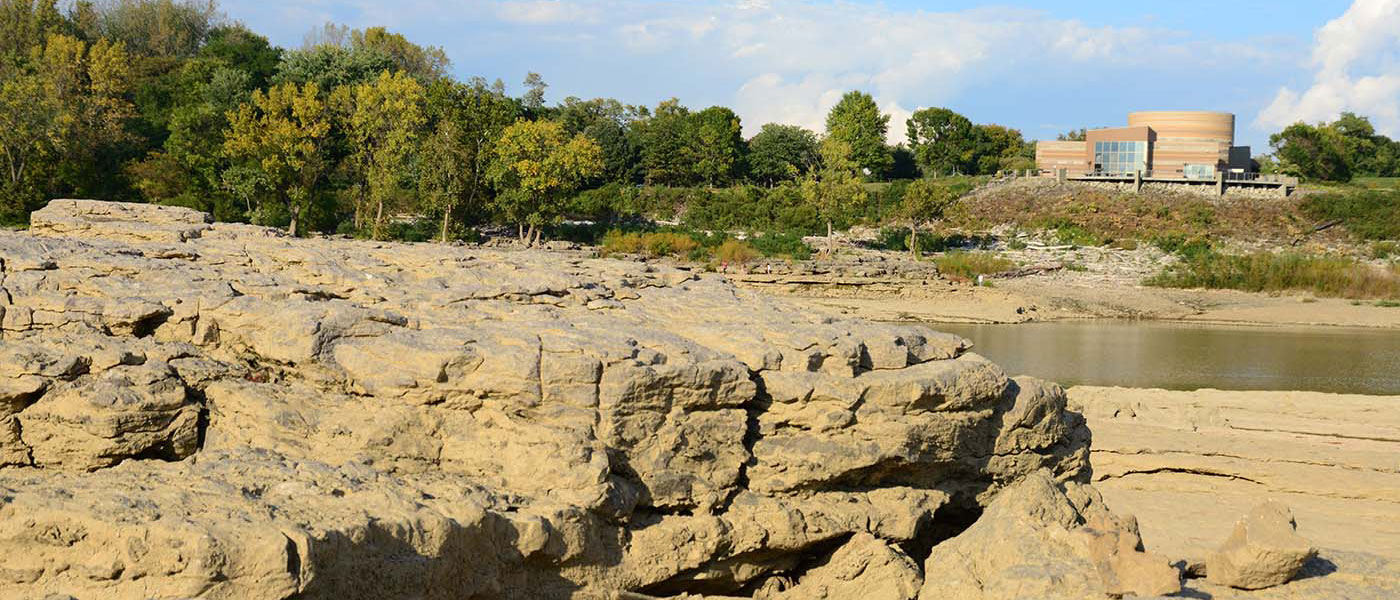- Falls of the Ohio Alerts (0)
- None at this time.
- Falls Facts
- More than 600 species of fossils have been described at the Falls, two-thirds of which have been “type specimens,” which are fossils described for the first time. More than 250 species of corals have been identified.
- In 1778, George Rogers Clark established the first permanent English-speaking settlement in the Northwest Territory on Corn Island. Later he lived on the shore and founded Clarksville. His homesite, below the Falls, is now part of the state park, though his cabin no longer exists.
- In 1806 Aaron Burr trained troops in Jeffersonville and built ships at Silver Creek for a possible invasion of Mexico.
- William Clark, younger brother of George Rogers Clark, set out from here with Meriwether Lewis to explore the territory of the Louisiana Purchase.
- “The rumbling sound of the waters as they tumble over the rock-paved rapids is at all times soothing to the ear.” —John James Audubon. Audubon made more than 200 sketches of 14 species of birds while living in the Falls area.
- Over 270 species of birds have been recorded at the Falls.
- Mark Twain and Walt Whitman both wrote about the Falls area.
- The primitive paddlefish is but one of the 125 species of fish found at the Falls.
- Hard limestone layers presented an obstacle to navigation for early explorers and settlers. This was the only place between Pittsburgh, Pennsylvania, (where the Ohio River starts) and New Orleans, Louisiana, where boats had dangerous rapids or a low water barricade of rock.
- Activities
- Boat Launch Ramp/Ohio River
- Education Programs
- Falls of the Ohio State Park Fossil Challenge:
Falls of the Ohio State Park is known for its 390-million-year-old Devonian fossil beds that are among the largest exposed beds in the world. This challenge invites you to discover these unique features on your own. See the challenge brochure for more information. - Fishing
- Hiking Trails
- Interpretive Naturalist Services
- Interpretive Center at Falls of the Ohio
- Special programs & events
- George Rogers Clark cabin
- Kids Indoor Activities
- Picnic areas
Brochures
- Birds of Falls of the Ohio State Park checklist
- Corals of Falls of the Ohio State Park
- Crinoids & Blastoids at the Falls of the Ohio
- Discovering Fossils at the Falls of the Ohio
- Story of River Pebbles
- Trilobites at the Falls of the Ohio
- What Is a Patch Reef
Information
- Smartphone App for Exhibits
Falls of the Ohio State Park has partnered with A4A to create a welcoming and accessible space to enjoy the museum’s exhibits. Made for both iOS and Android devices, the free app provides:
- Assisted listening - Live audio and captions for the exhibit’s media.
- Audio descriptions - Synchronized audio descriptions of media content.
- Social stories - Information on how to interact with exhibits.
- Sound and lighting ratings - Sensory sensitivity information for exhibits.
Download the app from the Apple Store or on Google Play.
Loading events


